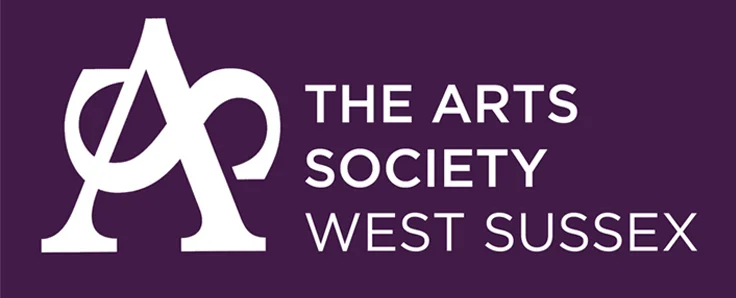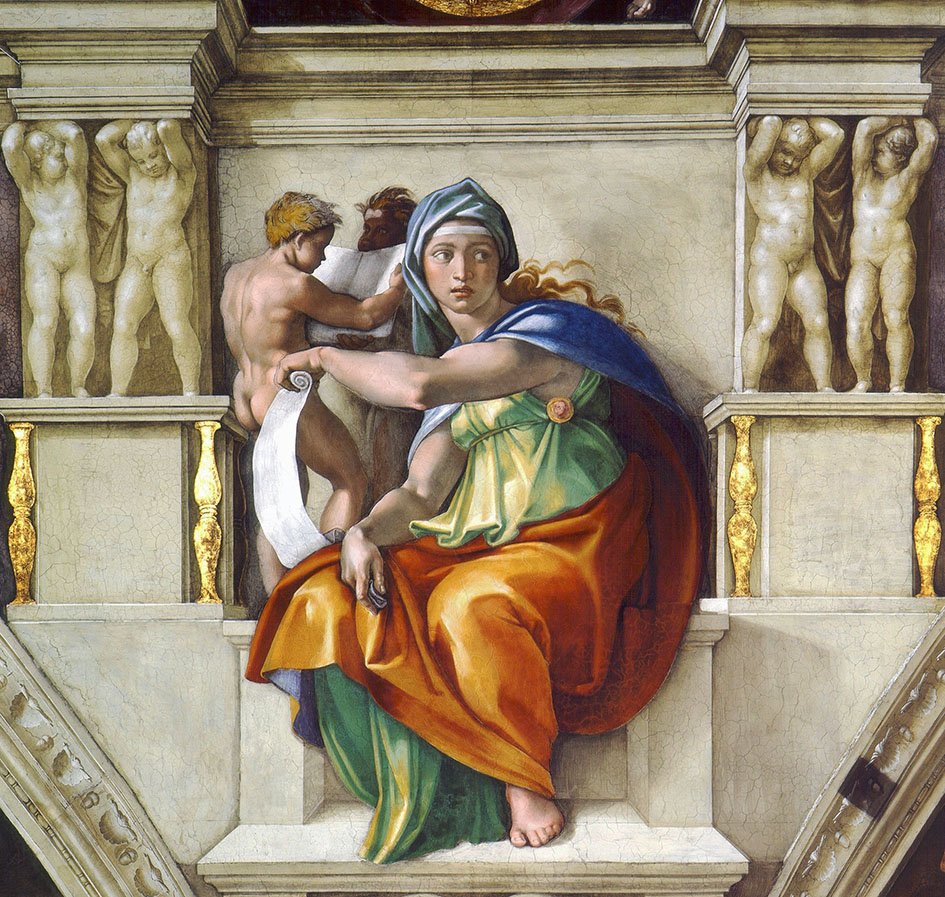2024 PROGRAMME
Our Talks are held in the Fittleworth Village Hall at 2:00pm on the 1st Tuesday of each month. Visitors are welcome to join our Talks at a price of £8 each visit.
TUESDAY 6TH FEBRUARY
THE GOLDEN SECTION - DIVINE PROPORTION IN ART AND ARCHITECTURE
BY ALEXANDRA EPPS
The Annunciation, Botticelli, c. 1485–1492, The Met New York. Source.
For thousands of years the mystery of the Golden Section has inspired thinkers from all disciplines, artists and architects, mathematicians and musicians. Discover the secrets of its sacred geometry and beauty within creations from the classical to contemporary.
Alexandra is an official Guide and Lecturer at Tate Modern, Tate Britain and Guildhall Art Gallery. Qualified Guide to the City of London, offering lectures and walks about many aspects of the arts for societies, corporations and private individuals. Member of the City of London Guide Lecturers Association. Co-author of the book Lord Mayor's Portraits 1983-2014 (2015). Alexandra’s background is in design. BA Saint Martins School of Art, MA London College of Printing.
TUESDAY 5TH MARCH
THE GOLDEN ROAD TO SAMARKAND - THE ARCHITECTURE, ART AND TEXTILES OF UZBEKISTAN BY CHRIS ASLAN
The Blue Mosque, Bukhara, Uzbekistan. Source:
Uzbekistan in the heart of Central Asia boasts glittering mosques, madrassahs and minarets in the Silk Road cities of Samarkand, Bukhara and Khiva. These contrast wonderfully with the brutalist Soviet buildings of Tashkent, Urgench and Nukus. This lecture is an overview of the country, and a primer for anyone thinking of visiting.
Chris Aslan was born in Turkey (hence the name Aslan) and spent his childhood there and in war-torn Beirut. After studying Media and journalism at Leicester University. He moved to a desert oasis in Uzbekistan, establishing a UNESCO workshop reviving fifteenth century carpet designs and embroideries. Forced to leave as part of an anti-Western purge he then took a year in Cambridge to write A Carpet Ride to Khiva. Chris then spent several years in Tajikistan, training yak herders to comb their yaks for their cashmere-like down. Next came a couple more years in Kyrgyzstan living in the world’s largest natural walnut forest and establishing a wood-carving workshop.
TUESDAY 2ND APRIL
THE ART OF CAPTAIN COOK’S VOYAGES BY PRASANNAJIT DE SILVA TUESDAY
The body of Vehiatua II, chief of Teahupo'o, lying in state in Tahiti two years after his death, as encountered by Captain Cook on his third voyage (1777-1780). Coloured soft-ground etching by J. Webber, 1789. Wellcome Collection. Public Domain Mark. Source:
Captain Cook’s fame largely rests on the three expeditions to the Pacific that he led in the 1760s and 1770s. In addition to their important role in the history of European exploration, they are notable for being the first such voyages to include professional artists among the crew. These artists played a critical role in recording the places visited and the people and flora and fauna encountered on the voyages. But how did they deal with the novel surroundings they encountered? And how did their work go on to shape European understanding of those settings?
Prasannajit de Silva completed his doctorate in 2007, researching the art of the British in India during the late eighteenth and early nineteenth centuries. His lecturing covers British visual culture of the eighteenth, nineteenth, and early twentieth centuries, including art produced in various colonial settings. He is particularly interested in the relationship of aspects of art, architecture, and design to their broader cultural, social, and political contexts. His work has included teaching roles at the University of Sussex, at Birkbeck, University of London, and at the WEA.
7TH MAY
SOROLLA, MASTER OF LIGHT BY JACQUELINE COCKBURN
Rocks at the Lighthouse, Biarritz, Joaquín Sorolla y Bastida, 1906, Art Institute, Chicago, Public Domain. source.
One of the most extraordinary Spanish artists from Valencia; Joaquin Sorolla has become better known more recently. He lived from 1863 to 1923 and created a world full of light and colour which delights the senses. Sometimes a social painter he was more concerned with capturing light falling on bodies and sea-scapes and his wonderful technique will be considered in this colourful lecture. His final Visions of Spain now in New York will also be shown.
Jacqueline is Managing Director of an art tours company, running residential courses in Andalucía, Southern Spain in the art and culture of the region. Jacqueline is a course director and lecturer at the V&A and also lectures at The Royal Academy, The Art Fund, and The London Art History Society . She lectures on European Art 1790-1950 and her specialist field is Spanish Art.
TUESDAY 4THJUNE
CATHERINE THE GREAT: THE WORLD’S GREATEST COLLECTOR
BY ANDREW PRINCE
Catherine the Great in her Coronation Robe, Vigilius Eriksen, 1778-1779, The David Collection, Copenhagen, Source.
In 1745, a Princess from the minor province of Anhalt-Zerbst in Saxony, married Prince Karl Peter Ulrich of Schleswig-Holstein-Gottorf, heir to the Imperial Russian Throne. She was Princess Sophie Auguste Frederike and by 1762 she was crowned Empress Catherine II and became the sole ruler of the Russian Empire. With seemingly inexhaustible wealth, she set about creating the most glittering court in Europe, if not the world. From the arts, to architecture, to the most dazzling of jewels, her passion for cultivating, commissioning and collecting only the finest has formed the nucleus of the Hermitage Museum in St Petersburg.
Two weeks after his 16th birthday, Andrew started work in London’s Bond Street, working for The Antiques Roadshow expert Ian Harris. Under his guidance, Andrew developed an appreciation for jewels that were valued for their quality of design and craftsmanship, rather than for how much the stones in the piece were worth. He then joined the renowned contemporary jeweller Elizabeth Gage and worked with her on the design and production side. Andrew’s jewelry has featured in V&A collections and has been used in many major films.
TUESDAY 2ND JULY
THE PERFECT HOUSE: ANDREA PALLADIO’S VENETIAN VILLAS
BY ANDREW HOPKINS
Villa Chiericati by Andrea Palladio, Hans A. Rosbach. Source
Palladio’s villas are his most celebrated accomplishment because of their beauty, practicality and, in cases such as the Villa Rotunda, its iconic image. The villas were also known through the woodcuts that illustrated Palladio’s treatise the Four Books of Architecture, which meant that they were copied and imitated in Britain and America. This talk examines why his villas have such enduring appeal.
Previously Assistant Director of the British School at Rome and since 2004 Andrew has been Associate Professor at the University of L'Aquila. Part of his PhD (Courtauld Institute 1995) on Venetian architecture was awarded the Essay Medal of 1996 by the Society of Architectural Historians (GB). A Fellow at Harvard University's Villa I Tatti in Florence in 2003-2004, and in 2009 was the Paul Mellon Senior Visiting Fellow, Center for Advanced Studies in the Visual Arts, National Gallery of Art, Washington D.C.
TUESDAY 3RD SEPTEMBER
THE INFLUENCE OF JAPANESE ART ON MANET AND VAN GOGH
BY OLIVER GOSLING
Flowering Plum Orchard (after Hiroshige), Van GOgh, Van Gogh Museum, Amsterdam (Vincent van Gogh Foundation). Source
In the early 1860s Japanese prints started to pour into Europe; in Paris young radical painters, seeking fresh pictorial ideas appropriate to modern subjects, collected them (they were very cheap). These prints by Japanese artists such as Hiroshige, Hokusai, Utamaro and Kunisada became hugely influential on the direction painting was to take. We focus on the works of Manet and Van Gogh, two major artists of the latter half of the 19th century, and look at the way Japanese prints had a powerful impact on ideas about composition, space, colour, form and expression of line.
Oliver trained as a painter at the Royal College of Art. His work is in collections around the world. He lived and exhibited in Japan for two years (1998-2001), and in China for eight years (2007-2015), where he continues to be represented by two galleries. BA Fine Art Painting and MA Fine Art, University of Brighton; From 2001 to date: Lecturer, Certificate in the History of Art, University of Oxford (Materials and Techniques of Western Painting).
TUESDAY 1ST OCTOBER
THE ARCHITECTURE OF MUGHAL INDIA: PALACES, MOSQUES, GARDENS AND MAUSOLEUMS’’ BY JOHN STEVENS
Red Fort, New Delhi, Delhi, Partha Chowdhury, CC BY-NC 2.0 DEED: Source
Before the British arrived in India, the Indian subcontinent was ruled by the Mughal Emperors. The stunning buildings and gardens they constructed from the sixteenth to the eighteenth century have left an indelible stamp on India’s architectural and cultural landscape. Mughal architecture fused elements from Islamic, Persian, Turkish and Indian architectural traditions, and gave rise to some of the most beautiful and iconic buildings in the world. From the Jama Masjid in Delhi, to the Taj Mahal in Agra, to the Shalimar Gardens in Lahore, this lecture will take you on a tour of some of India’s greatest buildings, and provide insight into the historical contexts and colourful personalities involved in their construction.
John gained his PhD in History from UCL, before going on to teach British Imperial History, Indian History and Bengali Language at the School of Oriental and African Studies (SOAS, University of London). His biography of the Indian guru Keshab Chandra Sen –Keshab: Bengal’s Forgotten Prophet- was published by Hurst and Oxford University Press in 2018. He is a regular visitor to India and Bangladesh and has lectured at numerous Indian universities. He also works as a consultant on Indian affairs and teaches the Bengali language to private students. He has appeared many times in the Indian media, and was a guest on BBC Radio Four’s In Our Time.
TUESDAY 5TH NOVEMBER
THE SISTINE CHAPEL: BEFORE AND AFTER MICHELANGELO
BY JAMES LINDOW
Michelangelo Buonarroti's Delphic Sibyl (circa 1509) famous painting. Digitally enhanced by rawpixel. Source:
While the Sistine Chapel is synonymous with Michelangelo, what is not so familiar is the contribution made by other contemporary artists to its decoration. During the 1480s Pope Sixtus IV commissioned a team of Florentine artists to decorate the newly built chapel with scenes from the Lives of Christ and Moses. After Michelangelo had finished the ceiling for Pope Julius II (1508-12), his successor Pope Leo X commissioned Raphael in 1515 to ‘complete’ the chapel by designing tapestry cartoons to hang beneath the earlier frescoes. This lecture examines these less familiar contributions, setting them within the context of their respective patrons’ tastes and the Chapel’s unique position as the centre of the Catholic Church.
James was the first Renaissance PhD from the Royal College of Art and the V&A. He has convened and presented at international conferences, lectures widely in the UK and overseas and is currently a fine art underwriter in the City. He has written articles on diverse aspects of the Renaissance, and his book entitled The Renaissance Palace in Florence: Magnificence and Splendour in Fifteenth-Century Italy was published by Ashgate Press in 2007 to widespread critical acclaim.
TUESDAY 3RD DECEMBER
I O SATURNALIA! HAPPY CHRISTMAS THE ROMAN WAY
BY GILLIAN HOVELL
A Roman Feast, Roberto Bompiani, 1821 - 1908) Source.
Early Christians celebrated Christmas at the same time as the ancient Romans were feasting and partying for their pagan Saturnalia festival. Many of the pagan habits were therefore absorbed into our Christmas traditions. Present-giving, holly and even party-hats all have their origins in this 2000-year-old party. This talk will revel in artwork that is ancient and modern as we unwrap the images and stories behind our festive season.
A BA (Hons) Latin and Ancient History, Exeter University Gillian then branched out into archaeology. Ex-BBC, lecturer for British Museum and York University, an award winning writer and author who specialises in relating the ancient world to our modern lives. Her many publications include Visiting the Past: A guide to finding and understanding Britain's Archaeology and Roman Britain.











